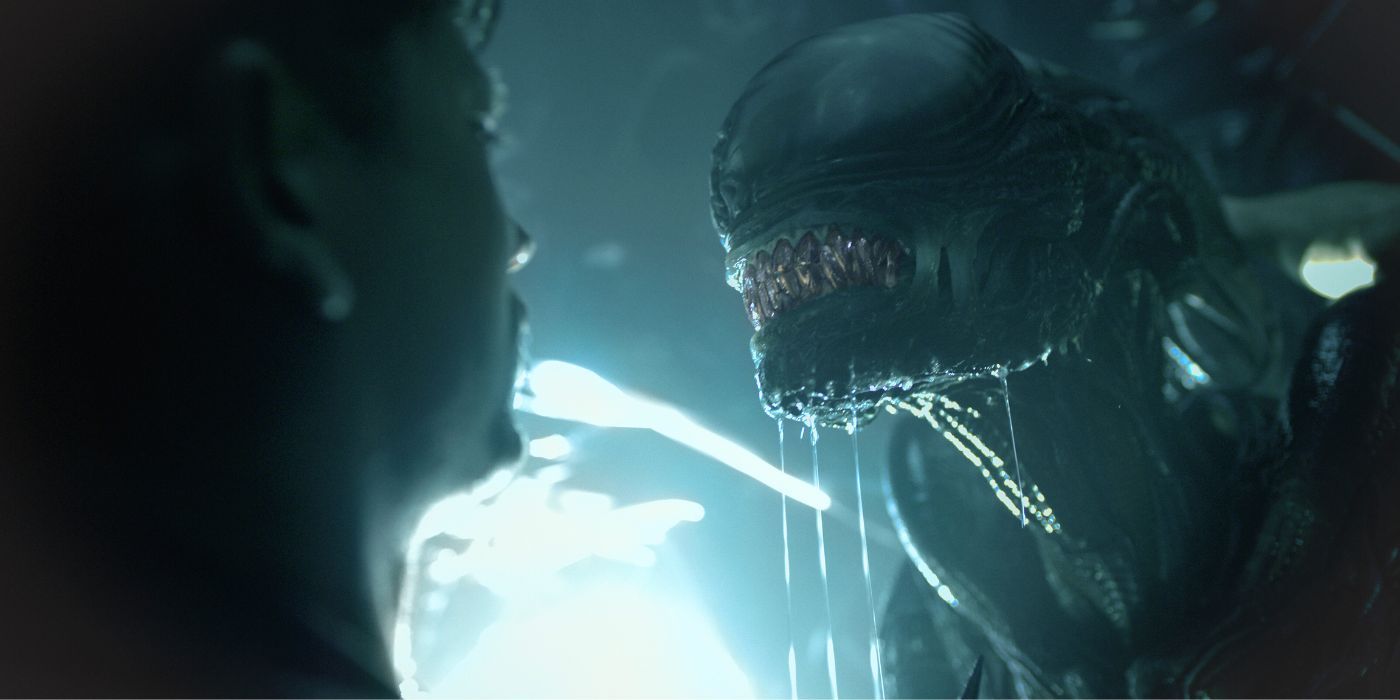Editor’s Observe: The next comprises spoilers for Alien: Romulus.
Alien: Romulus marks a return to one in every of horror’s most sacred franchises, with Ridley Scott leaving the director’s chair after his two prequels, Prometheus and Alien: Covenant. Fortunately, the job was given to Fede Álvarez, whose style experience proved to be a win for the Alien universe. Coming off the tail of Scott’s prequels, Alien: Romulus brings the franchise again to its horror roots, together with its beloved iconography. That is most evident within the return of the unique xenomorph and its basic three-stage life cycle — however that is not all. Ridley Scott’s prequels focused on universe-building, however in doing so, additionally took a controversial departure from the normal xenomorph designs. Alien: Romulus, nonetheless, is an thrilling return to kind, reintroducing the likes of facehuggers and chestbursters in some terrifying updates. Alongside devoted depictions, Álvarez additionally affords new visions of terror — most notably the grotesque, acid-sputtering wall cocoon, a never-before-seen a part of xeno-morphology. Coined “The Chrysalis” (the sequence’s soundtrack title), the cocoon is a major development in franchise lore, and could be Álvarez’s most profitable threat in Alien: Romulus.
The Xenomorph Cocoon In ‘Alien: Romulus’ Is Each Terrifying and Logical
The oozing metamorphic sack arrives shortly after Aileen Wu’s Navarro falls sufferer to a basic facehugger/chestburster combo. As in previous motion pictures, the creature escapes into the darkness of a hall, organising the expectation of its subsequent fully-grown look. However Alien: Romulus has some new developments. Quickly after, Bjorn (Spike Fearn) spots a dripping mass nestled in a nook, and it seems one thing is gestating inside. That is revealed to be a growing xenomorph, confirming the cocoon as a brand new section of the alien’s life cycle.
With six different motion pictures following the unique Alien (1979), there have been numerous adjustments made to xenomorph lore. It’s merely in the nature of the Alien universe; its immersive components beckon filmmakers to experiment and discover new methods to develop. In Aliens,James Cameron invigorated followers with the introduction of a hive and an alien queen. However, Alien: Resurrection brought the alien-human hybrid, which was met with rather less enthusiasm. Throughout all of the interpretations, those that succeed share a capability to innovate whereas staying grounded within the iconography. That is precisely what the chrysalis from Alien: Romulus manages to take action effectively.
Past making for an ingenious idea, the cocoon additionally affords logic to justify a late-in-the-series look. In phrases of the xenomorph life cycle, the time between chestburster and a fully-grown grownup was largely unknown previous to Alien: Romulus. Previous contributions have caught to the skin-shedding course of; a minimalistic solution to trace in direction of a quickly rising organism. But, there nonetheless stays a spot within the timeline and logic right here, which Álvarez brilliantly seizes for his personal. In consequence, the chrysalis not solely feels believable however truly offers extra context for the xenomorph’s speedy evolution.
The Cocoon In Alien: Romulus’ Matches Proper In With The Alien Universe
Whereas this could be the primary look of a xenomorph chrysalis, there is no such thing as a doubt it feels proper at house in Ridley Scott’s universe. All the pieces in regards to the chrysalis — from its spontaneous divulge to its grotesque, sexual look — echoes the most effective tips of the Alien franchise. The sensible design is successful by itself, taking heavy inspiration from the unique film’s artist and visionary, H.R. Giger. Answerable for spearheading the creature design for the unique movie, Giger’s distinctive fashion is what came to define the imagery of the Alien universe. That is why the chrysalis in Romulus manages to slot in whereas being one thing solely new. When the cocoon exhibits up on display screen, it’s a second of confusion and terror. But, as one character will get a little bit too shut, Álvarez’s path begins to transmit a way of familiarity — one which echoes Kane’s discovery of the eggs again in 1979. Equally, an unfortunate character discovers a “factor,” as does the viewers in real-time, bringing all of the anxiety-ridden vulnerability that an Alien film ought to have. It’s additionally fairly apparent what precisely the chrysalis invokes (spoiler: it’s sexual), cementing it as an ideal homage to H.R. Giger’s basic designs.
Alien: Romulus’ introduction of the xenomorph cocoon is an ideal instance of lore enlargement that additionally feels justified. The second is consultant of how director Fede Alvarez’ manages to remain grounded within the Alien universe while offering his own flavor of world-building. In consequence, the brand new scares in Alien: Romulus are stunning, but efficient, remaining devoted to the ideas of the unique movie. Whereas the storytelling of Prometheus and Alien: Covenant helped expand the universe, additionally they left quite a bit to be desired from the franchise. Alien: Romulus, however, reintegrates the iconography that has at all times labored, whereas taking dangers that immortalize its legitimacy within the franchise.
Alien: Romulus is in theaters now. Click on under for showtimes.

